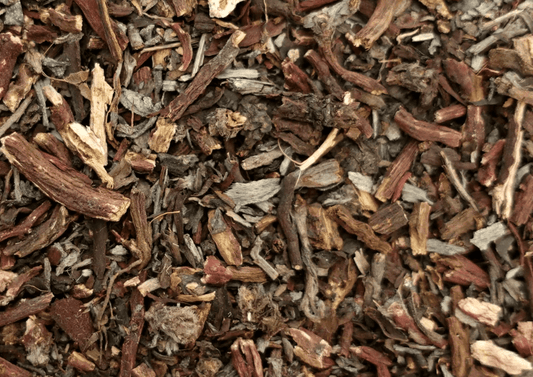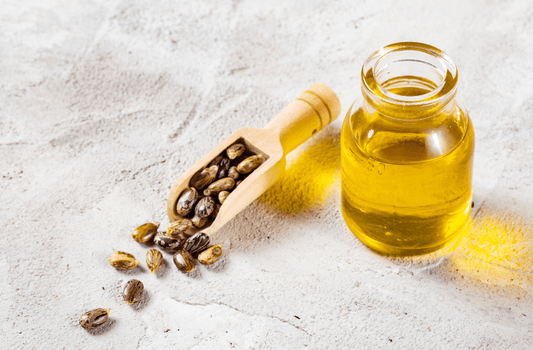Does your hair need a little TLC? Are you feeling the hair guilt because you’ve been colouring, washing and grabbing that Dyson Airwrap a little too often? All these day-to-day habits can strip hair of it’s lovely protective natural oils and lead to thin, damaged hair. We’re here to help - read on to discover what causes hair damage, how to tell if it’s damaged plus a fantastic DIY home hair treatment recipe for thin or damaged hair to help repair and protect it.
What Happens to Hair When It’s Damaged?
Unfortunately it can be all too easy to damage your hair, but the more you know about how this happens, the better you’ll be armed to help stop it. Hair damage is much more than just a few split ends and is usually caused by our normal hair routine - using a blow dryer or straighteners, harsh brushing or sun damage. All these things can cause the outer layer of your hair, the cuticle, to lift up which leaves cracks in the hair shaft. These cracks stop hair being able to retain essential moisture and leaves hair dull, frizzy, tangled and brittle.
Damaged hair is also too stretchy. Our hair is porous, but a lipid coated membrane helps stop it from becoming waterlogged. When hair is over washed or styled too often using heat or chemicals then this important lipid layer gets stripped away, leaving your hair without its important natural barrier. Without this layer hair gets waterlogged and then becomes far too stretchy. This is when brushing wet hair causes damage, as the hair then stretches as you brush it which can cause the hair to fracture.
Whilst hair damage can’t be completely repaired, there are things you can do to help prevent it happening in the future and to help restore the hair.
How To Tell If You Have Thin or Damaged Hair
If you’re wondering how to tell if your hair is damaged, there are some tell-tale signs that will help you.
Does it feel dry or brittle? If your hair feels dry then that is because the moisture is escaping too quickly due to the damaged and rough cuticle.
Are you noticing more hair shedding in the shower? This is because damaged hair is brittle and breaks off more easily.
Is your hair tangly? When the cuticle layer is damaged and rough it causes hair strands to catch on each other and become tangled. Of course, long or curly hair can tangle easily, but if you are noticing that your hair has recently become harder to manage then it could be due to damage.
Your hair looks dull or frizzy? Damaged hair cuticles don’t sit flat anymore, so they lack the smoothness and shine that healthy hair has.
Andy’s Hair Treatment For Damaged Hair
This is a hair treatment that is easy to make at home and designed for hair that is damaged or thin. Made from all natural oils, try it today to try and get some life back into that hair! There are only 4 ingredients to this treatment, so it's nice and simple. But, it may divide opinion. More on that later.
Ingredients
Now, a quick word on these ingredients, and why I say this recipe will divide opinion...neem oil smells. Yep, I said it. No one (including me) likes the smell of neem oil. Some people tolerate it, but I'm yet to meet someone who likes it. However, it is great in a hair treatment if you have an itchy scalp or dandruff. But if you really can't stand it, then leave it out.
After using this treatment a number of times and getting people to smell my hair (yes, really!), I'm confident in saying that when you wash this treatment out with shampoo it doesn't leave a smell behind.
Method
Just mix them together! Couldn't be simpler!
How To Use It
I like to apply this hair treatment about 20 minutes before a shower, and then wash it out with shampoo (fancy making your own shampoo too? Try this ready made base!)
I start by pouring an amount the size of a 2p coin into my palm, rub it between my hands and then massaging into my scalp and hair. If you have longer hair you will need a little more, but seriously, a little goes a long way.
You will get much better results applying small quantities regularly than drenching yourself in it once!
As with all recipes, it’s a good idea to test for sensitivity on a small part of your scalp before spreading it all over!
We hope this treatment for thin or damaged hair helps restore your locks to their shiny, healthy glory! Used regularly it will help smooth, detangle and add shine as well as keeping new hair growth healthy and strong. Just remember to be gentle with your hair as well - don’t brush it while wet, try to keep heat and chemicals to a minimum and don’t overwash.



